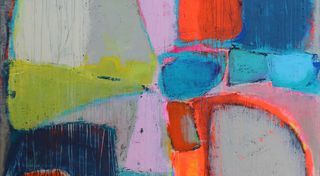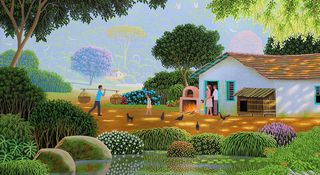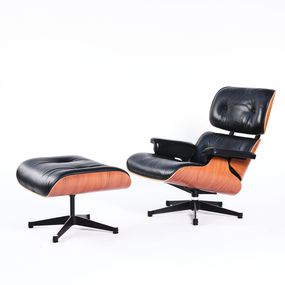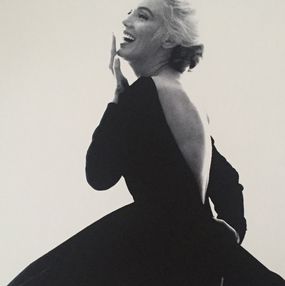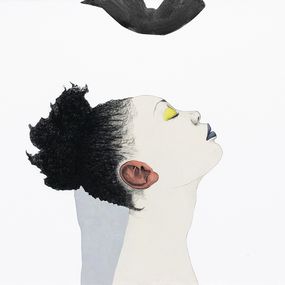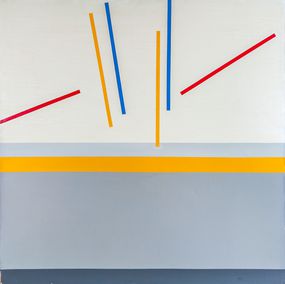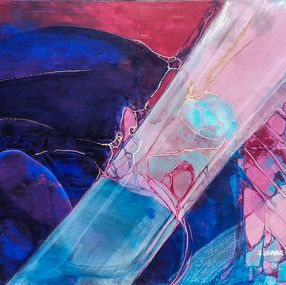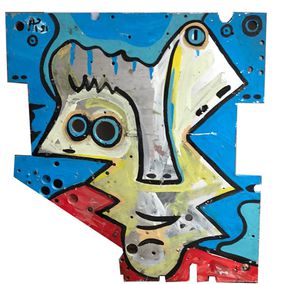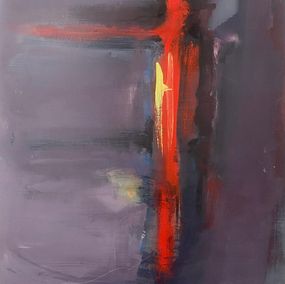
Suspension Galaxy,
Circa 1949
Charles and Ray Eames
Design : aluminium, Lighting
100 x 100 x 100 cm 39.4 x 39.4 x 39.4 inch
Free returns within 14 days
Authenticity guaranteed
Learn moreSecure payment
About the artwork
Type
Open edition
Signature
Engraved signature
Authenticity
Sold with certificate of Authenticity from the artist
Invoice from the gallery
Medium
Dimensions cm • inch
100 x 100 x 100 cm 39.4 x 39.4 x 39.4 inch Height x Width x Depth
Framing
Not framed
Artwork sold in perfect condition
Artwork location: France
Galaxy is a pendant lamp born in the late 1940s from the genius of Charles and Ray Eames, assembling brass tubes and components from the automotive industry in a wooden sphere. Cassina puts into production for the first time this masterpiece which, despite the considerable interest it had aroused, had never been mass-produced. Galaxy is the result of a collaboration with the Eames Office, the design agency founded by Charles and Ray in 1941, and consists of a central sphere to which 36 rods of different lengths are attached, each equipped with an LED light source, thus evoking a sky dotted with stars. Cassina innovated the original project by adding a "plug & play" system that allows the rods to be inserted into the sphere to radiate into space, while allowing for extremely small packaging compared to the size of the final product.
Presentation
Charles Ormond Eames, Jr (1907–1978) and Bernice Alexandra "Ray" (née Kaiser) Eames (1912–1988) /?i?mz/ were husband and wife American designers who made significant historical contributions to the development of modern architecture and furniture. Among their most well-known designs is the Eames Lounge Chair. They also worked in the fields of industrial and graphic design, fine art and film.
Contents [hide]
1 Charles Eames 1.1 Philosophy
2 Ray Kaiser Eames 2.1 Philosophy
3 Designers
4 Works 4.1 Architecture
4.2 Films (selected)
4.3 Furniture designs
4.4 Exhibition design
4.5 Other
5 Awards and recognition 5.1 Film
5.2 Exhibitions and retrospectives
6 Citations
7 References
8 Further reading
9 External links
Charles Eames[edit]
Charles Ormond Eames, Jr, (June 17, 1907 – August 21, 1978) briefly studied architecture at Washington University in St. Louis on an architecture scholarship. After two years of study, he left the university. Many sources claim that he was dismissed for his advocacy of Frank Lloyd Wright and his interest in modern architects. The university reportedly dropped him because of his "too modern" views.[1] Other sources, less frequently cited, note that while a student, Charles Eames also was employed as an architect at the firm of Trueblood and Graf.[2] The demands on his time from this employment and from his classes led to sleep-deprivation and diminished performance at the university.
While at Washington University, he met his first wife, Catherine Woermann, whom he married in 1929. A year later, they had a daughter, Lucia Jenkins.
In 1930, Charles began his own architectural practice in St. Louis with partner Charles Gray. They were later joined by a third partner, Walter Pauley.
Charles Eames was greatly influenced by the Finnish architect Eliel Saarinen (whose son Eero, also an architect, would become a partner and friend). At the elder Saarinen's invitation, Charles moved in 1938 with his wife Catherine and daughter Lucia to Michigan, to further study architecture at the Cranbrook Academy of Art, where he would become a teacher and head of the industrial design department. In order to apply for the Architecture and Urban Planning Program, Eames defined an area of focus—the St. Louis waterfront. Together with Eero Saarinen he designed prize-winning furniture for New York's Museum of Modern Art "Organic Design in Home Furnishings" competition.[3] Their work displayed the new technique of wood moulding (originally developed by Alvar Aalto), that Eames would further develop in many moulded plywood products, including chairs and other furniture, splints and stretchers for the US Navy during World War II.[4]
In 1941, Charles and Catherine divorced, and he married his Cranbrook colleague Bernice ("Ray") Kaiser, who was born in Sacramento, California. He then moved with her to Los Angeles, California, where they worked and lived until their deaths. In the late 1940s, as part of the Arts & Architecture magazine's "Case Study" program, the Eames designed and built the groundbreaking Eames House, Case Study House #8, as their home. Located upon a cliff overlooking the Pacific Ocean and hand-constructed within a matter of days entirely of pre-fabricated steel parts intended for industrial construction, it remains a milestone of modern architecture.
Charles Eames died of a heart attack on August 21, 1978 while on a consulting trip in his native Saint Louis, and was buried in the Calvary Cemetery there. He now has a star on the St. Louis Walk of Fame.[5]
Philosophy[edit]
In 1970 and 1971, Charles Eames gave the Charles Eliot Norton Lectures at Harvard University. At the lectures, the Eames viewpoint and philosophy are related through Charles' own telling of what he called "the banana leaf parable"", a banana leaf being the most basic eating utensil in southern India. He related the progression of design and its process where the banana leaf is transformed into something fantastically ornate. He explains the next step and ties it to the design process by finishing the parable with:
But you can go beyond that and the guys that have not only means, but a certain amount of knowledge and understanding, go the next step and they eat off of a banana leaf. And I think that in these times when we fall back and regroup, that somehow or other, the banana leaf parable sort of got to get working there, because I'm not prepared to say that the banana leaf that one eats off of is the same as the other eats off of, but it's that process that has happened within the man that changes the banana leaf. And as we attack these problems—and I hope and I expect that the total amount of energy used in this world is going to go from high to medium to a little bit lower—the banana leaf idea might have a great part in it.[6]
—?Charles Eames
Ray Kaiser Eames[edit]
Ray-Bernice Alexandra Kaiser Eames (December 15, 1912 – August 21, 1988) was an American artist, designer, and filmmaker. Along with her husband Charles Eames she is responsible for groundbreaking contributions in the field of architecture. furniture design, industrial design, manufacturing and the photographic arts.[7] She was born in Sacramento, California to Alexander and Edna Burr Kaiser, and had a brother named Maurice. She spent her early childhood years with her parents in their apartment, and then moved to a bungalow outside of the town. Her parents taught her the quality of enjoyment which later led to inventions in furniture design and toys. Her parents also instilled the value of enjoyment of nature.[8] After having lived in a number of cities during her youth and after her father's death, in 1933 she graduated from Bennett Women's College in Millbrook, New York, and moved to New York City, where she studied abstract expressionist painting with Hans Hofmann. She was a founder of the American Abstract Artists group in 1936 and displayed paintings in their first show a year later in 1937 at Riverside Museum in Manhattan.[9] One of her paintings is in the permanent collection of The Whitney Museum of American Art. Ray lived alone in New York City until she was called home to be with her ailing mother, who passed away in 1940.
In September 1940, Ben Baldwin, an architect and friend, recommended she began studies at the Cranbrook Academy of Art in Bloomfield Hills, Michigan. She learned a variety of arts, not limiting herself to abstract painting. She worked with Harry Bertoia, Eero Saarinen, Charles Eames and others on the display panels for the exhibition "Organic Design in Home Furnishings" at Museum of Modern Art.[10] Ray married Charles Eames in 1941.[11] Settling in Los Angeles, California, Charles and Ray Eames began an outstanding career in design and architecture.
The design process between Ray and Charles was strongly collaborative. After marriage the couple moved to California to continue their molded plywood furniture design and, in a later period, plastic. The graphic and commercial artwork can be clearly attributed to Ray, she designed twenty-six cover designs for the journal Arts & Architecture during 1942 to 1948, and a major part of the Eames furniture advertisements at Herman Miller (since 1948).[10]
In the late 1940s, Ray Eames created several textile designs, two of which, "Crosspatch" and "Sea Things", were produced by Schiffer Prints, a company that also produced textiles by Salvador Dalí and Frank Lloyd Wright.[12] Two of her textile patterns were distinguished with awards in a textile competition (organized by MoMa). She worked on graphics for advertising, magazine covers, posters, timelines, game boards, invitations and business cards. Original examples of Ray Eames textiles can be found in many art museum collections. The Ray Eames textiles have been re-issued by Maharam as part of their Textiles of the Twentieth Century collection.
After Charles's death in 1978, the Eames Office was disbanded. Ray Eames worked on several unfinished projects (e.g. a German version of the Mathematica exhibition), was a consultant to IBM, published books, and administered the Eames archive and estate.[10]
Ray Eames died in Los Angeles in 1988, ten years to the day after Charles. They are buried next to each other in Calvary Cemetery in St. Louis
Designers
American artists
More works from Galerie vingt sur vingt
Artsper delivers internationally. The list of countries is available in the first step of your cart.
If your country is not listed contact us at [email protected] and we will see what we can do.
Note that Customs fees may apply for works shipped internationally. This is indicated in the first step of the shopping cart.
You can choose a delivery address different from the billing address. Make sure that a trusted person is present to receive the work if you cannot be there.
Have you purchased a painting, sculpture or work on paper?
Find our expert advice for the conservation and promotion of your works in the articles below:
Artsper offers you access to more than 200,000 works of contemporary art from 2,000 partner galleries. Our team of experts carefully selects galleries to guarantee the quality and originality of the works.
You benefit from:
-
Works at gallery price
-
Return within 14 days, regardless of your location
-
Easy resale of the work purchased on Artsper
-
Personalized research tools (selection and tailor-made universe)
Our customer service is available for any assistance.
At Artsper, our mission is to allow you to collect works of art with complete peace of mind. Discover the protections we offer at every stage of your shopping experience.
Buy works from top galleries
We work in close collaboration with carefully selected art galleries. Each seller on Artsper is carefully examined and approved by our team, thus ensuring compliance with our code of ethics. You therefore have the assurance of purchasing authentic, high-quality works.
Total transparency: you know what you are buying
Before being posted online, all artwork on Artsper is reviewed and validated by our moderation team. You can browse with complete peace of mind, knowing that each piece meets our criteria of excellence.
Personalized support: our experts at your service
Our team of contemporary art experts is available by phone or email to answer all your questions. Whether you want advice on a work or a tailor-made selection to enrich your collection, we are here to support you.
Resell your works with ease
If you have purchased a work on Artsper and wish to resell it, we offer you a dedicated platform to relist it. To find out more, click here.
Make offers with Artsper: negotiate like in a gallery
You have the possibility to propose a price for certain works, just like in a gallery. This feature allows you to initiate discussions and potentially acquire your coins at advantageous prices.
Get help with your negotiations
Our team will negotiate for you and inform you as soon as the best offer is obtained. Do not hesitate to call on our expertise to ensure a transaction at the best price.
Order securely
Artsper satisfaction assurance
We want you to be completely satisfied with your purchase. If the work you receive is not to your liking, you have 14 days to return it free of charge, and you will be refunded in full, whatever the reason.
Secure payment with Artsper partners
All credit card payments are processed by Paybox, the world leader in payment solutions. Thanks to their strict security standards, you can transact with confidence.
Problem Support
In the rare event that an artwork arrives damaged or not as described, we are here to help. Whether for a return, refund, restoration or exchange, our team will support you throughout the process and will ensure that we find the solution best suited to your situation.
Conditions to benefit from Artsper protections:
-
Use one of the payment methods available on Artsper for your order.
-
Report any problems within one week of receiving the work.
-
Provide required photographic evidence (including original artwork and packaging).
Artsper guarantees cover the following cases:
-
The received work lacks a described characteristic (for example, a signature or frame).
-
The artwork has significant differences from its description (e.g. color variation).
-
The work is damaged upon receipt.
-
The work is lost or damaged by the carrier.
-
Delivery is significantly delayed.
With Artsper, you collect with complete peace of mind.
